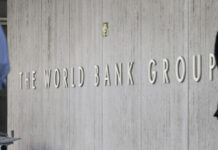
[miningmx.com] — RIO Tinto CEO, Tom Albanese, styled resource nationalism the single biggest challenge “for years to come” as he sought to map out the group’s $26bn capital outlay of which $7bn would be in the emerging economies of Mongolia and Mozambique, and at least $10bn in Guinea in still to be approved expenditure.
“We are very realistic in what certain [political] regimes look like. From a strategic point of view, resource nationalism is one of the largest challenges, and it will be for years to come.”
Speaking at the group’s interim results ended June, Albanese also defended the $127bn group’s failure to meet a capital expenditure target which was likely to put it $1bn off the $13bn in capex earmarked for the financial year. Albanese acknowledged difficulties in expanding production quickly enough was a mining industry problem, but he was adamant Rio Tinto did not share in it.
“We have $6bn in capital commitments [for the remainder of the year] and we’re comfortable we’ll spend closer to $12bn.
“All our main projects are on track but we’re not going to ask people to spend money for the sake of it,” Albanese said. He was supported by chief financial officer, Guy Elliott, who said: “The ‘run rate’ is lower than expected for the year, but if you look at the manning and commitments, capex will pick up aggressively”.
One of the biggest problems for mining companies is how they deploy their cash in the up-cycle: Rio Tinto executives repeatedly said the company’s capex was ‘rising’.
Project delivery was hampered by sparse skills and delays in delivery of important capital items which Albanese said was approaching the crisis of 2008 when trucks lay idle on project sites for want of wheels delayed by a year. According to one company slide, it was taking two years – twice as long as normal – to deliver crushers and shiploaders.
Operating and project costs, meanwhile, were increasing owing to the 16% weakening this year of the US dollar, especially against the Australian dollar with the two currencies almost at parity. Costs are recorded in the currency of the country in which they were incurred whereas metal and mineral sales are recorded in dollars, the denomination of international mineral trade.
Commenting on resource nationalism, Albanese said there wasn’t a single country in the world where sovereign risk was not an issue.
Fiscal and debt concerns among certain host governments was high as was the need to balance the budget against which mining companies were benefiting from record commodity prices. In this context, there was ever growing populist calls by governments to participate in the commodity boom which meant mining companies were under pressure to cooperate more with them.
However, Albanese added that Rio Tinto was also a driver of jobs and other investment and it would therefore pick its investment destinations carefully. “We have to be realistic about this. We are still more likely to make investments where there is long-term stability”.
Worryingly for South Africa, Rio Tinto last year decided to divest from its Chapudi coal assets in the Limpopo province and switched its interest to Mozambique where it paid $4bn for the Benga coking coal project – perhaps an indication the UK and Australian listed firm was uneasy about South Africa’s direction.
Rio Tinto reported a 35% jump in first-half profit, but it missed market expectations and then worried analysts about its ability to deliver with lower-than-expected capital spend, as well as its ambition when it unveiled a $2bn expansion of its share buyback programme – an indication it could not find enough projects.
Booming iron ore sales to China helped propel underlying profit to $7.8bn for the six months ended June, a record for the first half but below analysts’ consensus forecast of $8.03bn.











